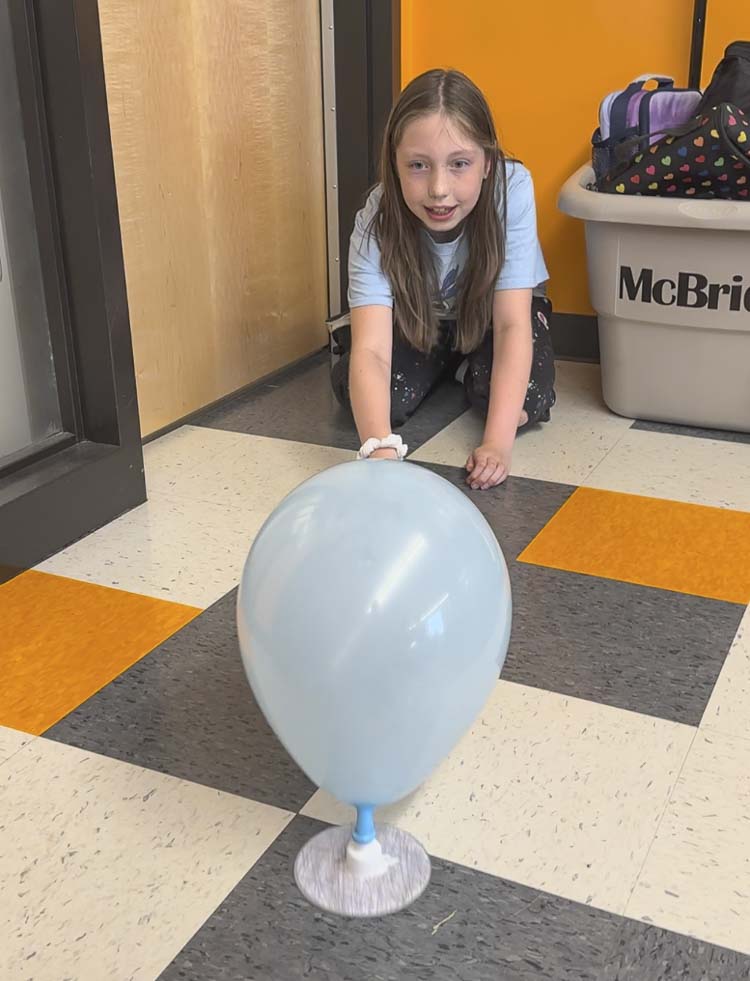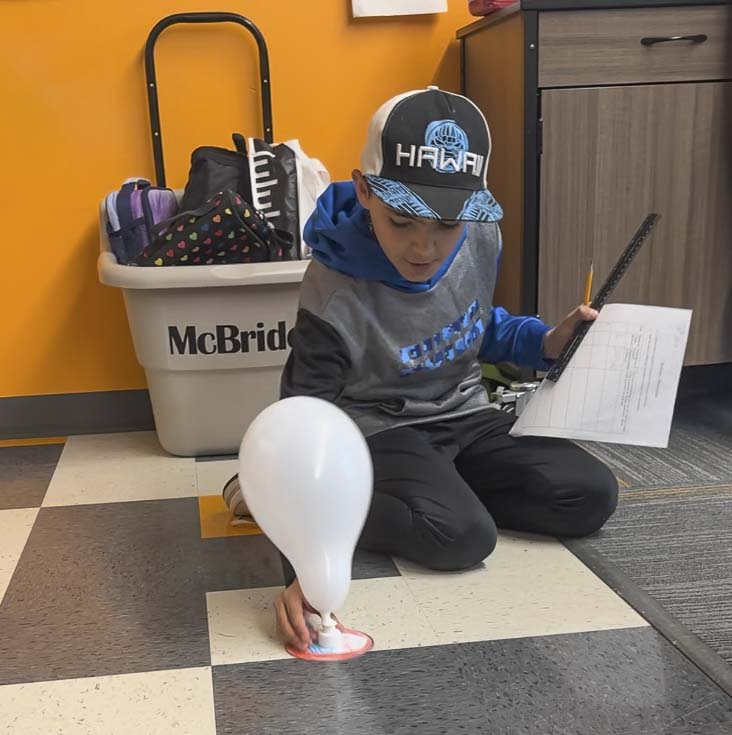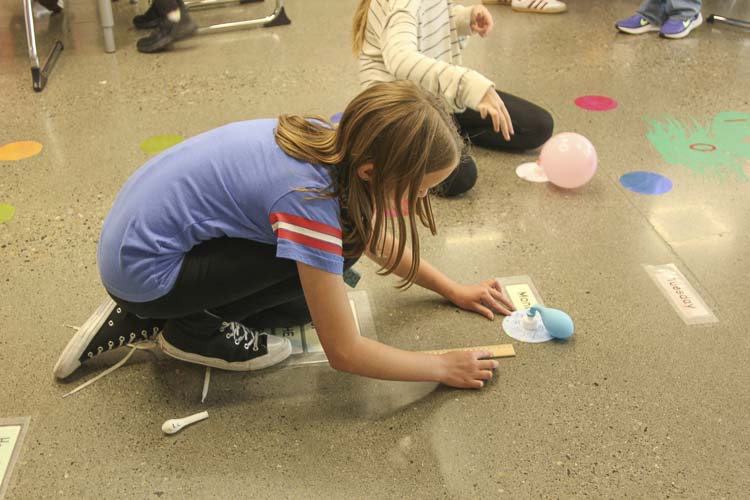
Students created the hovercrafts from CDs, balloons, and the cap from a bottle
Students in Khrista McBride and Samantha Howards’ fourth grade classrooms at Columbia River Gorge Elementary School applied science and engineering concepts as they built, tested, and measured the results of balloon-powered hovercraft races.
Students created the hovercrafts from CDs, balloons, and the cap from a bottle. The balloons were connected to the cap, which was glued onto the CD, creating a small gap for air to flow out, resulting in a small amount of lift to let the hovercrafts glide on hard surfaces.

Each student tested their hovercraft in several settings, and with different sizes of balloons, and measured the distance traveled, so they could analyze the resulting data and draw conclusions about what makes a successful hovercraft. Howard said, “Students exploring is the most natural way to learn.”
McBride said that, “After the lesson, students reflected on the notes they gathered, and were surprised by the smaller balloons working better than larger balloons.” She described students discovering that, “The smaller size allowed their hovercraft to move further and faster due to the continuous volume of air flow.”

Students also found that designing the hovercraft with the shiny side of the CD facing down worked better than the label side. Students found this through “their comparisons and discussion which led them to decide that the smooth side was the better one facing down. They learned that reducing friction made a difference.” Students also noticed differences between distance traveled due to the flooring, including that the hovercraft traveled less distance on the rug than hard materials.
By combining science and engineering processes together, students learned the practical application of a number of science concepts, and how things like friction and weight can influence the outcome of an experiment.
Information provided by the Washougal School District.
Also read:
- Local robotics team earns Inspire Award at Watt InterleagueThe I.F. Robotics team from Vancouver earned the Inspire Award at the Watt Interleague competition, ranking No. 1 globally.
- Grant from Bridgestone leads to new van for Boys and Girls Clubs of Southwest WashingtonA new van, granted by Bridgestone’s “Driving Great Futures” initiative, will enhance transportation options for the Boys and Girls Clubs of Southwest Washington, fostering access to enrichment activities and college visits.
- Ridgefield School District honors December Employee and Students of the MonthThe Ridgefield School District honors exceptional students and staff as the December Employees and Students of the Month, celebrating their dedication and achievements.
- Battle Ground Police Department hosts 10th annual Shop with a Cop eventThe Battle Ground Police Department hosted its 10th annual Shop with a Cop event, bringing holiday cheer to over 20 local children
- Area law enforcement to host annual ‘Shop with a Cop’ event for Clark County YouthLaw enforcement and local youth team up for the annual “Shop with a Cop” event, offering support and holiday cheer in Clark County.









